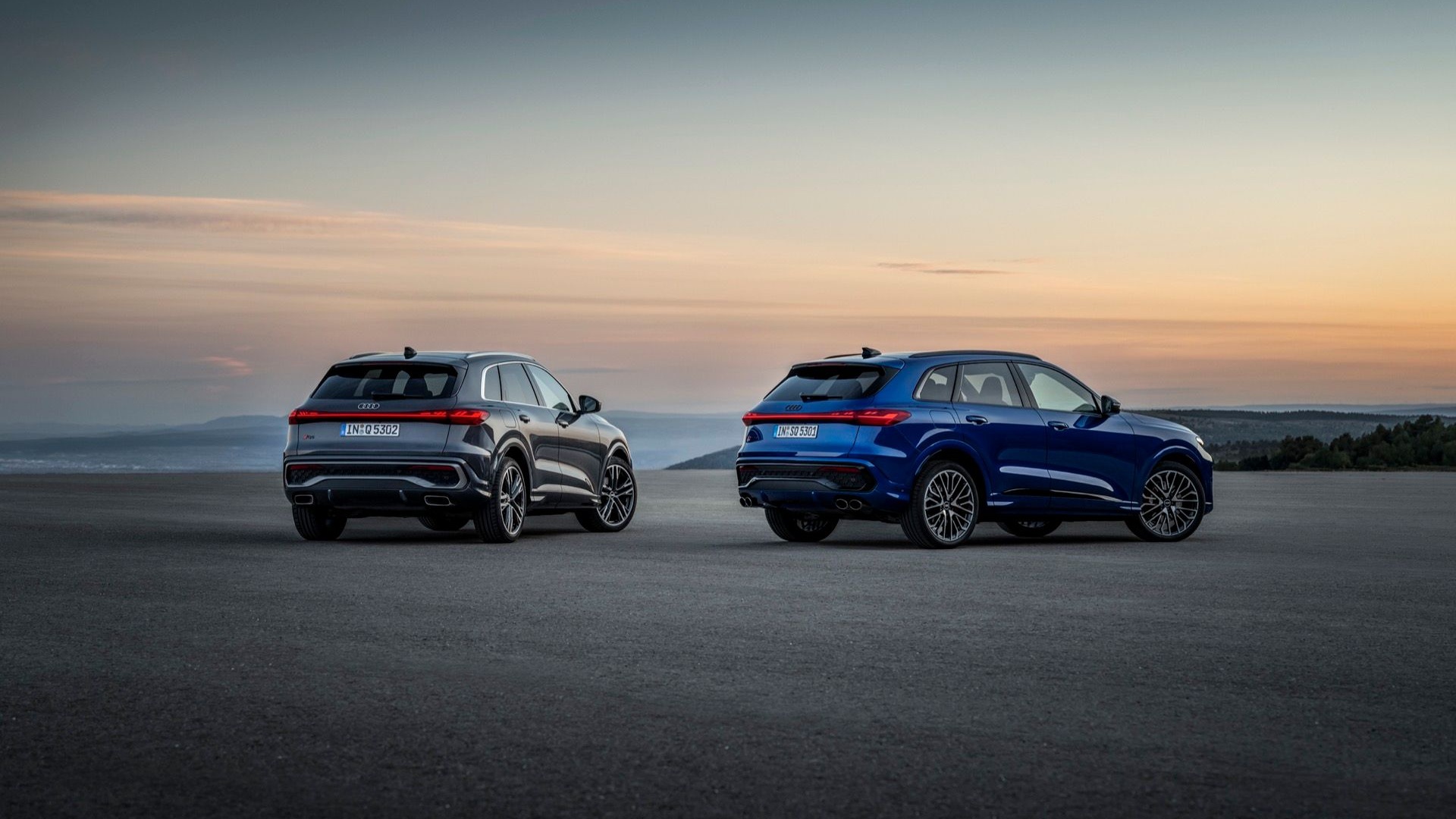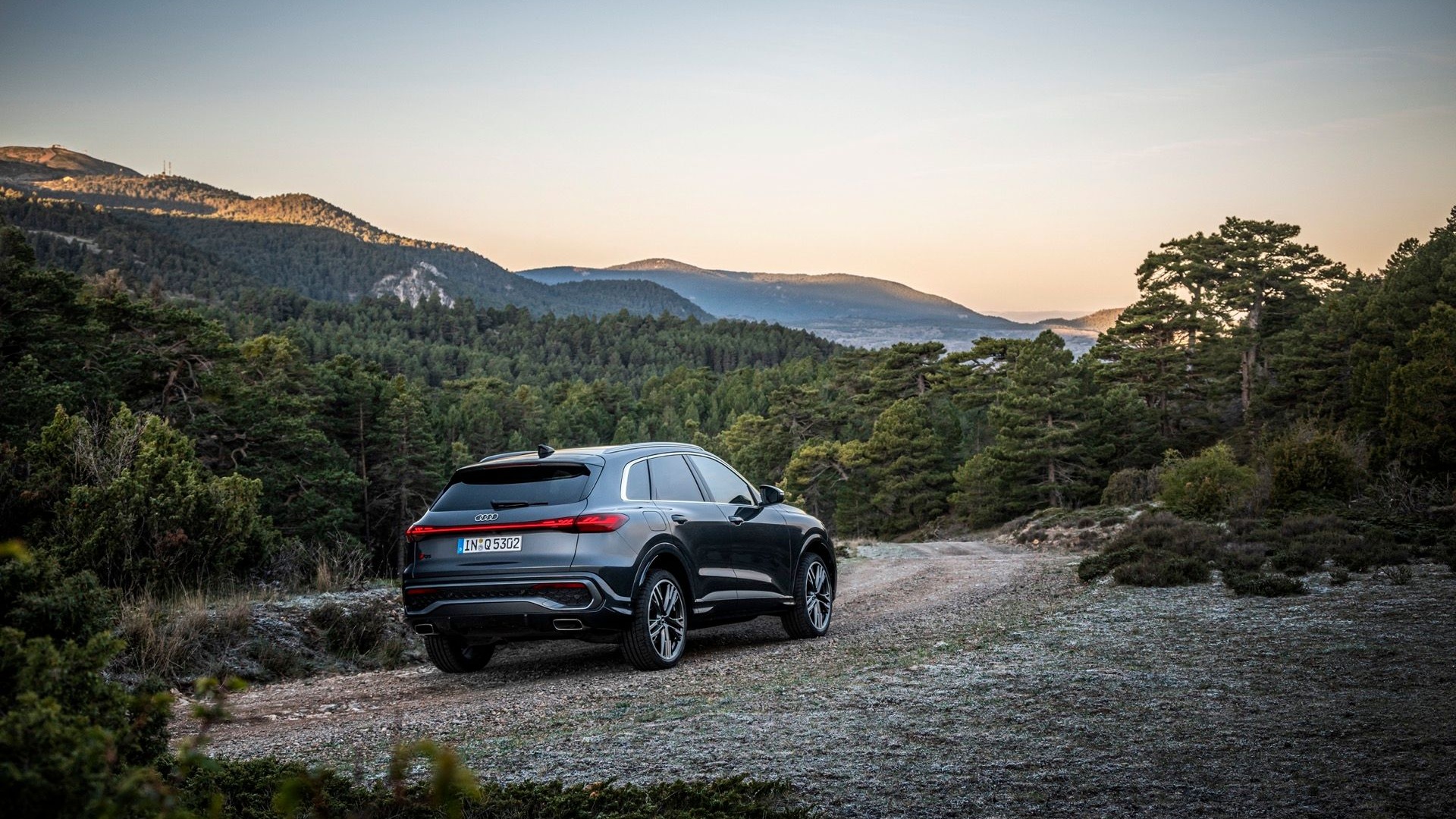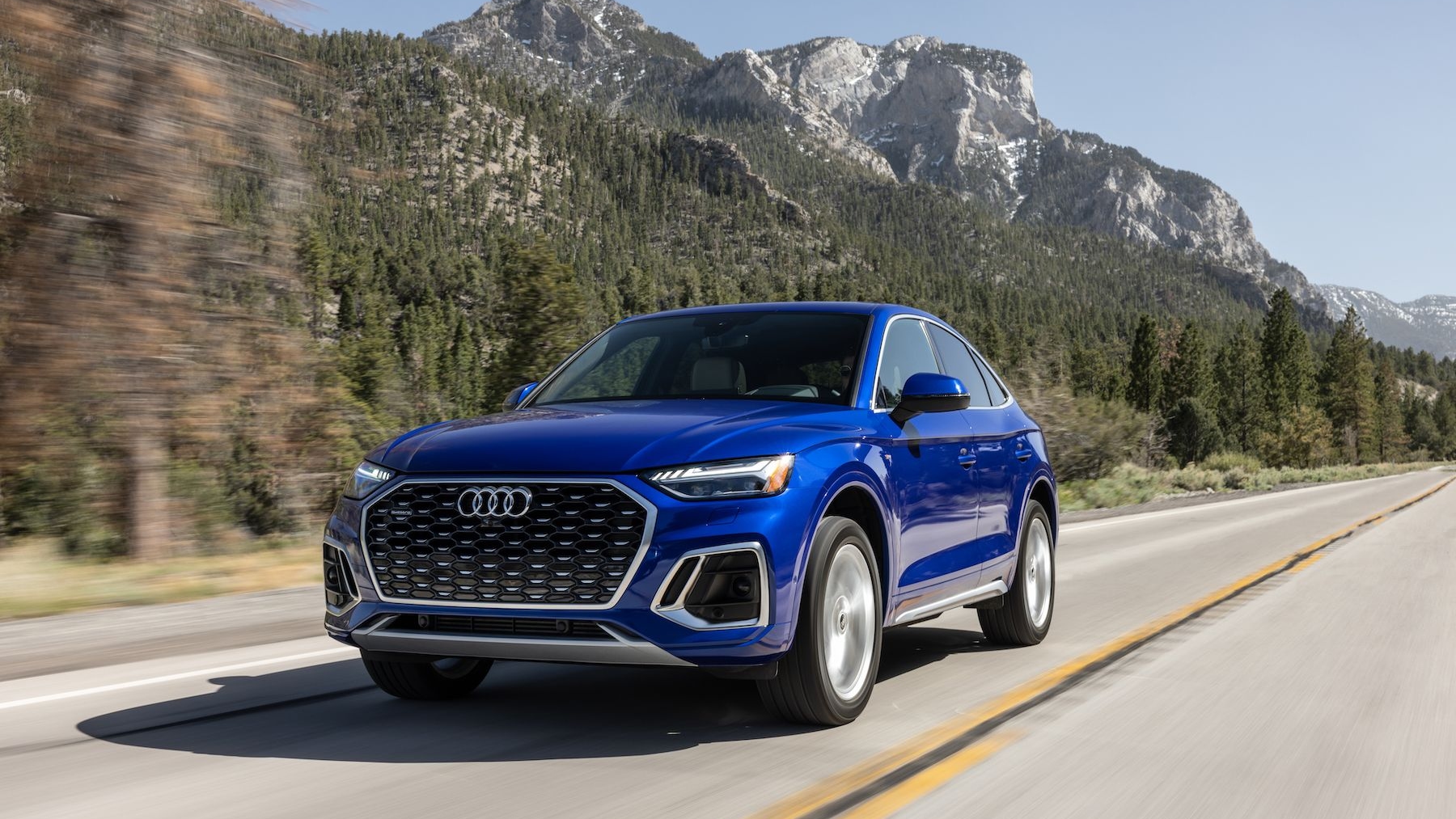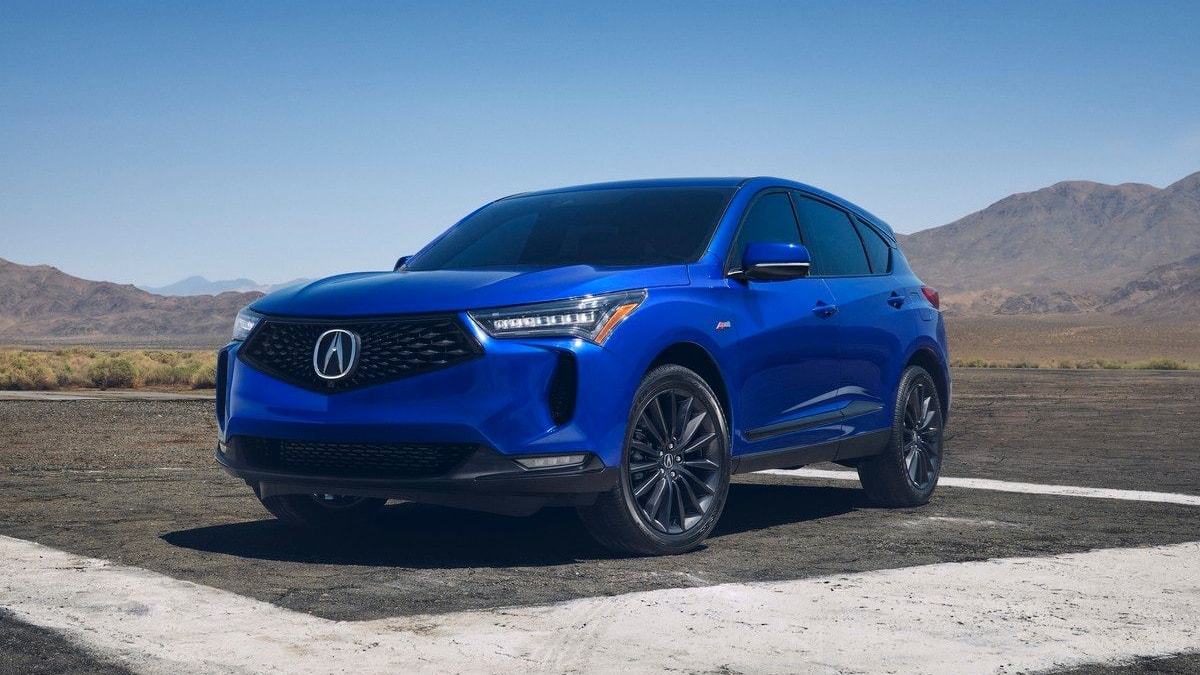- Redesigned SUV keeps the same proportions, lights up the exterior
- 2025 Audi Q5 uses a 268-hp turbo-4 with standard all-wheel drive
- 2025 Audi SQ5 employs a 362-hp turbocharged 3.0-liter V-6 with an air suspension
Audi unwrapped the 2025 Q5 and SQ5 SUVs over Labor Day weekend, illuminating a new design, more efficient engines, and a software-driven architecture. Of the 20 new or redesigned vehicles Audi will launch in the next two years, there is no more important one than the redesigned third-generation Q5.
Audi’s bestselling vehicle in the U.S. also makes up 44% of global Q5 sales,, but it could be the last of its kind. It’s the first Audi SUV to embrace the brand’s new Premium Platform Combustion platform, following the related 2025 Audi A5 revealed in July.
2025 Audi Q5 and SQ5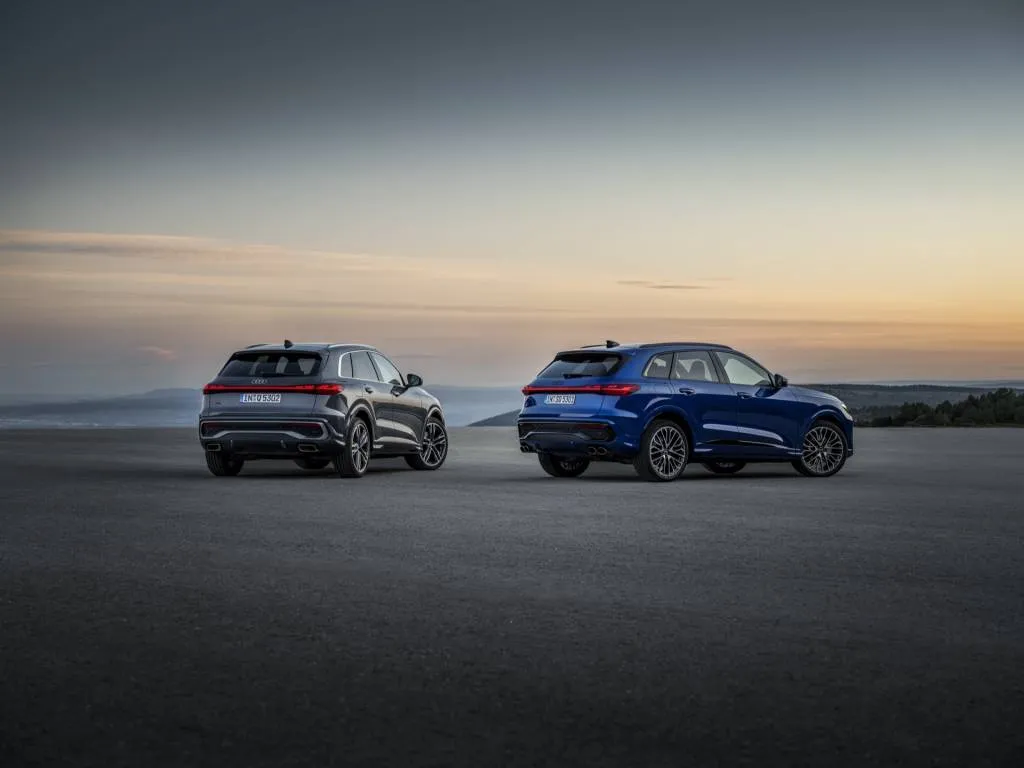
That serves as one of the shorter tines in Audi’s two-pronged approach in the next decade as it goes fully electric by 2033.
“Until then, we will have this parallel strategy step-by-step, and eventually we’ll reduce ICE vehicles,” Audi CEO Gernot Döllner explained at a press briefing in July. “For now, and the next two to three years, we’re introducing all-new ICE cars and then we will decide if we’ll have a next generation. We’ll have to reduce our portfolio as we won’t be able to handle that complexity as a company.”
The longer prong extends down Audi’s Premium Platform Electric strategy that launched earlier this summer with the 2025 Audi Q6 E-Tron electric SUV.
How long these platforms run and how many vehicles they’ll underpin really depends on market forces as much as political ones.
“We have a global strategy and maybe we’ll have a Western world and Chinese strategy, but for now we’ll have a strong link between Europe and the U.S.,” Döllner said. “We’ll see more cars influenced by North American market requirements, especially on the SUV side.”
2025 Audi SQ5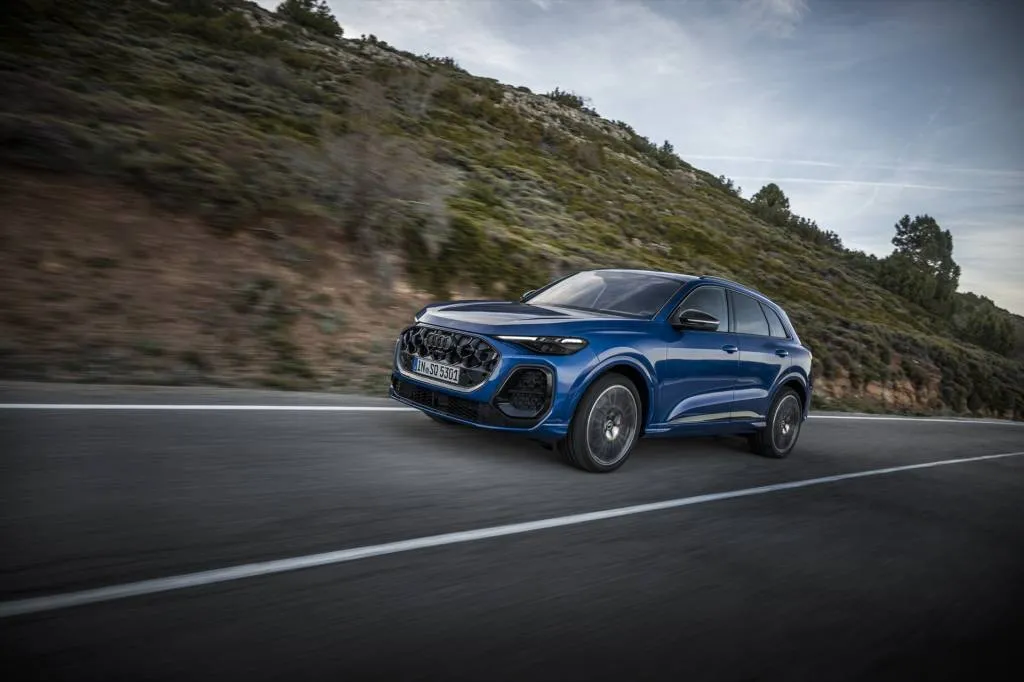
2025 Audi Q5 and SQ5 engines
The new PPC allows for most types of electrification but the Q5 “55” plug-in hybrid won’t return to the U.S., yet, and the 18-kw mild-hybrid system standard in European markets won’t come to the U.S. An Audi rep told Motor Authority that U.S. customers don’t want it and the EPA gains would be minimal. Most new BMW, Volvo, and Mercedes SUV models have some type of mild-hybrid system.
For now. When Döllner was asked if hybrids were planned for the U.S., his answer was unequivocal. “Yes.”
It could be the Q5. What we know for sure is the Q5 and SQ5 will get the same engines in the A5 and S5. The 2025 Audi Q5 comes with a 268-hp 2.0-liter turbo-4 that runs cleaner than the outgoing turbo-4, while the SQ5 runs cleaner with a more potent turbocharged 3.0-liter V-6 rated at 362 hp versus 349 hp in the outgoing V-6. All-wheel drive with torque vectoring comes standard, and the 7-speed dual-clutch automatic transmission carries over.
Stiffer steering and suspension mounts on the front axle should help button down the steel-spring suspension, and adaptive dampers will be available. A four-corner air suspension with adaptive dampers will be standard on the SQ5.
2025 Audi Q5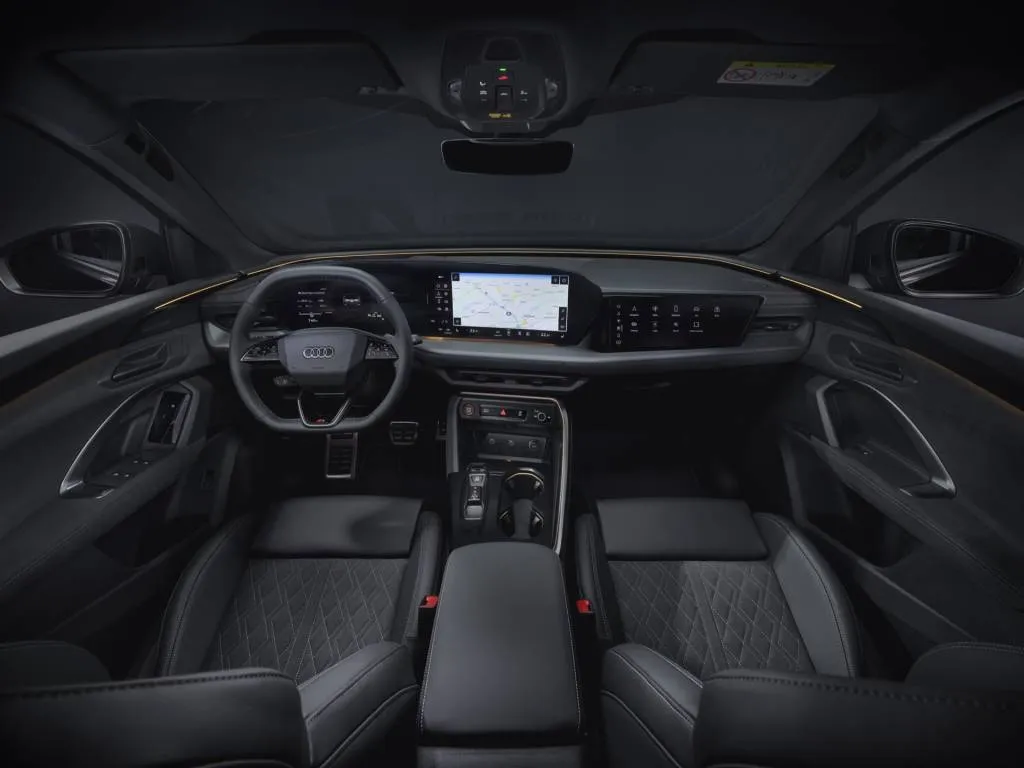
2025 Audi Q5 infotainment and tech
Audi's new software-defined electrical architecture runs five computers meant to keep the vehicle and its offerings as updatable as a smartphone. It helps the brand evolve what it’s already done well with a cutting-edge infotainment system and crystal clear interfaces. Those interfaces streamline across the dash instead of overwhelming it, as in certain rivals.
This “Digital Stage,” in Audi’s words, runs in a horizontal line with an 11.9-inch digital instrument cluster alongside a 14.5-inch touchscreen that curves toward the driver. Then there’s a 10.9-inch passenger screen that the driver can’t see. The passenger can stream out or help with directions and override navigation from the passenger screen.
With AI-backed voice commands that learn the driver’s preferences and manner of speaking, you don’t need to rely on the touchscreen much for anything, though the climate control panel integrates as part of the screen. Audi says the voice recognition system can register more than 800 commands, and that number grows with time. In limited testing at a preview, it satisfied most basic navigation commands and properly adjusted the climate control.
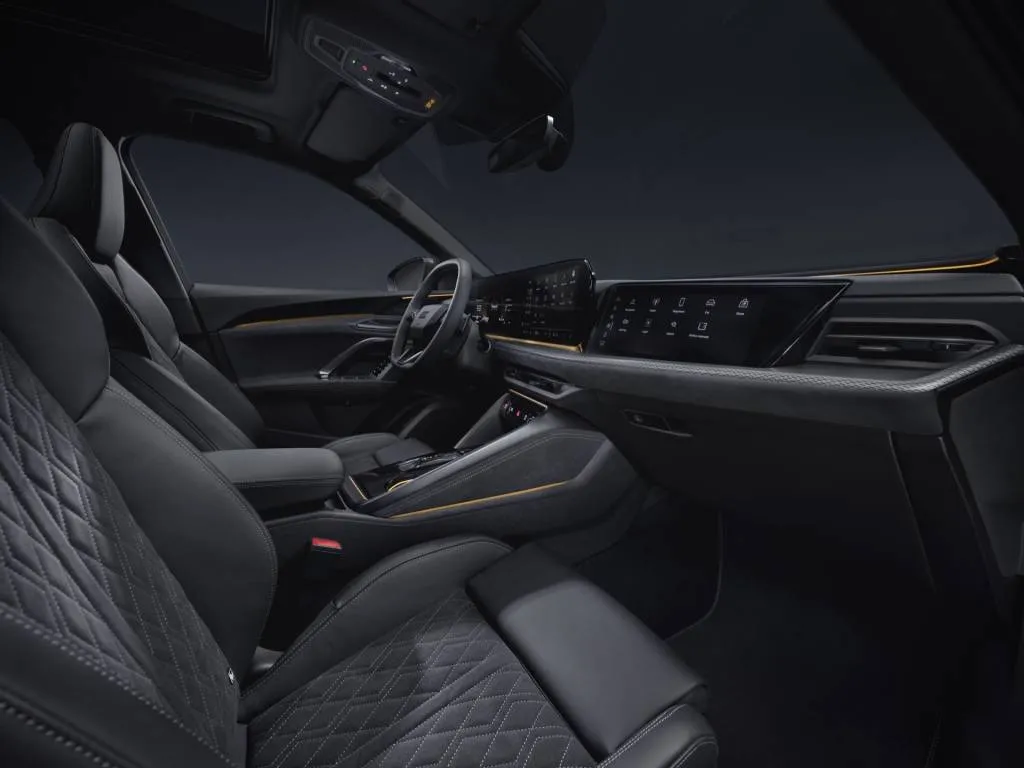
2025 Audi Q5
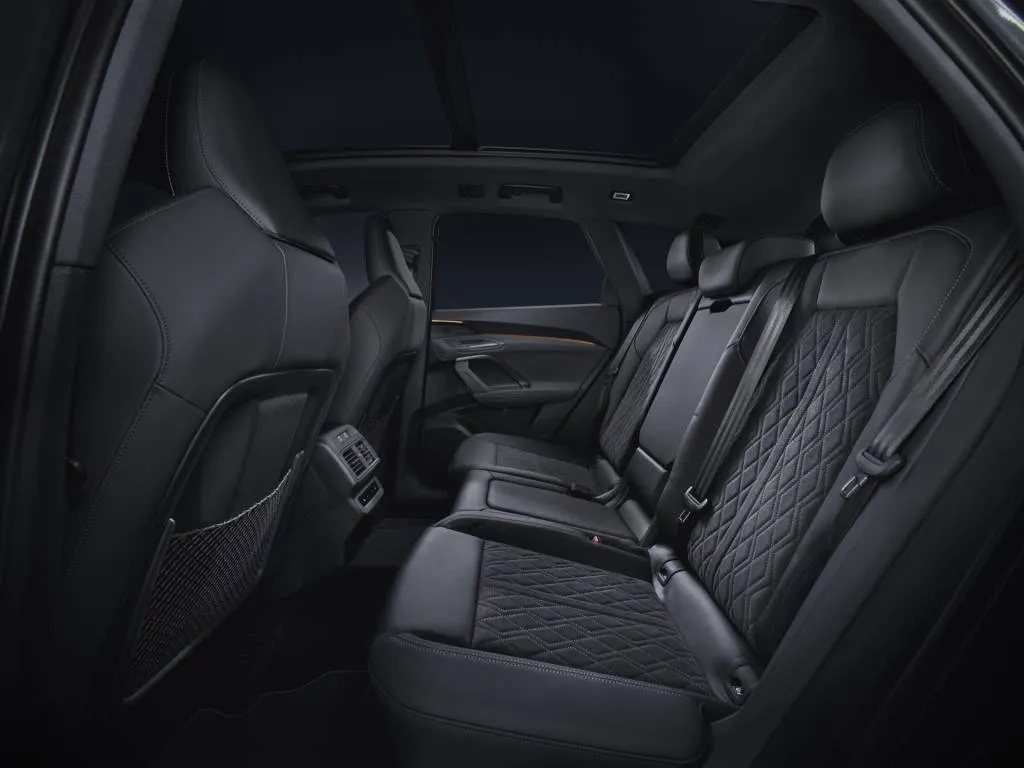
2025 Audi Q5
2025 Audi Q5 cabin comfort and size
The Q5 retains the same footprint as its predecessor, seating five though four passengers will be more comfortable. It’s sized more like the redesigned BMW X3 than the X5, and more like the Mercedes-Benz GLC than the GLE. It’s slightly smaller in length and wheelbase than the Genesis GV70 and Volvo XC60.
Audi swaddles the cabin in available quilted leather and soft-touch materials with contrast stitching from door to dash. The front seats provide standard power adjustments and available massagers, and there’s plenty of support on the sides and bottoms. SQ5 models get a hexagonal steering wheel with a flat top and bottom. Audi tries to reinvent the door control panel with a haptic touch surface to unlock the doors and control the windows and side mirrors; traditional knobs or toggles work better in our experience with the panel. It feels too much like the Volkswagen ID.4.
In back, three passengers can fit across with plenty of headroom and good legroom, but that middle passenger is best reserved for children. A panoramic sunroof cuts into rear headroom. The rear seats can slide and recline to optimize either passenger or cargo space, and the cargo floor has a slot to hide the cargo cover when not in use.
2025 Audi Q5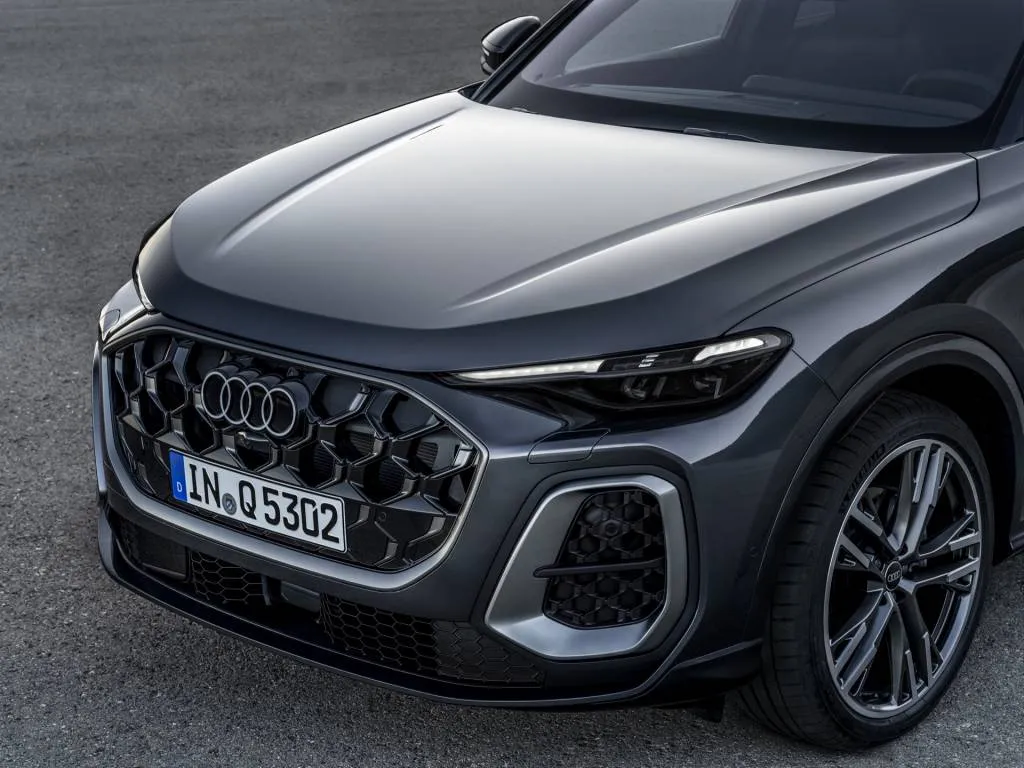
2025 Audi Q5 lighting
One other notable interior feature connects to the exterior design: A halo of lighting showcases the vehicle’s software-defined architecture. A light bar ringing the cowl and spanning the length of the windshield discreetly flashes a turn indicator. The normal turn signals still blink in the cluster, but this available “dynamic interaction light” can also show upcoming navigation directions in addition to what’s displayed in the head-up display or cluster. It’s subtle, and a gentle reminder that also accentuates the ambient lighting framing the dash, doors, and console.
The emphasis on lighting carries over to the exterior design, where Audi goes all in on its headlights and taillights. U.S. regulators won’t let them go full monty as in other markets but it’s still notable. Thin daytime running lights curve around the corners in narrow slits, and they can be customized in up to eight different light signatures programmable while in Park from the touchscreen. In back, a full-width taillight complements 3D illumination on the outer taillights. In other markets, those taillights can flash a hazard triangle to better warn drivers, and sequential turn lights can also be equipped. In North America, the integrated rear spoiler holds a third brake light across its span. It reflects into the glass, and can spell out “Quattro” for some free marketing of Audi’s all-wheel-drive system. The driver can’t see it in the rearview mirror.
The exterior lighting accentuates a new design for the Q5. The lower grille ditches the fake skid plate and stretches broader and bolder, turned up at the corners into vertical air intakes. A new honeycomb grille design holds a 3D Audi ring logo that can illuminate on some models. More underbody panels reduce drag, and a character line rides from the front fender to the rear. Wheel sizes range from 18 to 21 inches, the latter only available on the SQ5.
2025 Audi Q5
2025 Audi Q5 prices
Prices won’t be announced until late this year, and Audi expects deliveries of the third-gen Q5 and SQ5 to begin early in 2025. Premium, Premium Plus, and Prestige trims carry over, in base, S Line, and SQ5 grades. Prices for Europe don’t provide an equal comparison because those models will have the mild-hybrid system, so we expect the 2025 Q5 to start at less than the $59,000 Q5 Quattro (based on current exchange rates) in Europe. That also applies to the SQ5, which is listed as 82,000 euros, or about $90,000.
Audi paid for airfare and lodging for Motor Authority to present this firsthand report.


